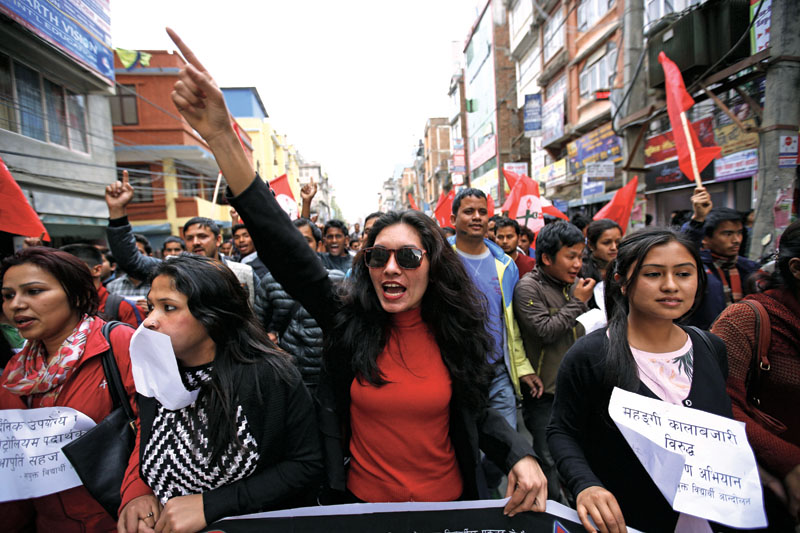Govt runs out of gas while enforcing rules
- LPG shortage recurs, as government fails to scrap licences of more than 50 errant bottling plants
Kathmandu, April 1
The operating licences of 52 gas bottling plants have not been suspended though they are not abiding by the government’s instruction to expand their storage capacity.
Erratic supply from India and increased demand have long been cited as the prime reasons for prolonged shortage of liquefied petroleum gas, popularly known as cooking gas, time and again. But as it turns out, the main reason for the scarcity is that the government seems to run out of gas when it comes to properly enforcing the existing law.
Under the jurisdiction of Export and Import (Control) Act, 1957, the government had issued a notice through Nepal Gazette on June 8, 2005, which had defined the required infrastructure to run gas bottling plants in the country. As per the law, bottling plants should meet storage capacity of at least 200 tonnes within five years from the date of operation. Similarly, they have to maintain 20 per cent of the mentioned capacity as stock. Failing to do so, as per the law, the government can suspend the operating licences of the bottling plants.
However, of the 55 bottling plants operating in the country, only three — Nepal Gas (500 tonnes), Salt Trading Corporation (200 tonnes) and Koshi Gas (500 tonnes) — have met the set criteria of expanding their storage capacity. Consequently, a perennial shortage of cooking gas has become a regular phenomenon in the country whenever there is even a minor obstruction in import of cooking gas.
The country has also been facing the crisis of LPG every winter season, when the consumption of cooking gas shoots up but bottlers keep failing to import the assigned quota.
More interestingly, the market regulator continues to be mum about the storage facility criteria.
Gokul Prasad Dhital, director general of the Department of Supply Management and Consumer Protection — the authorised market monitoring body — simply said since he was recently appointed to the post, he was not aware of such provision.
Owners of the bottling plants, on the other hand, are quick to deflect the question about storage facility. “The supply we get from Indian Oil Corporation is barely enough to cater to the demand in the country, so what’s the point in expanding the storage?” questioned Kush Prasad Mally, vice president of Nepal LP Gas Industries Association.
According to Nepal Oil Corporation, the recurrent shortage of LPG can also be attributed to the limited number of gas bullets — 450 — that the bottling plants have taken on lease to import cooking fuel. In this regard, NOC had recently even urged the bottling plants to hire more bullets to increase import and ease supply in the market.
“It’s strange that the bottlers keep pressing the corporation to increase the import quota when they neither have the required number of bullets to import more gas nor the needed infrastructure to store it,” said Mukunda Prasad Ghimire, spokesperson for NOC.
Supply Minister Ganesh Man Pun has even formed a committee under the leadership of Joint Secretary at the Ministry of Supplies Uttam Nagila to conduct a study for effective supply and distribution of LPG. The committee, formed on March 15, has been holding series of discussions with stakeholders and experts to resolve the perennial shortage of cooking fuel.
Prem Lal Maharjan, one of the members of the committee and president of National Consumer Forum, opines that the government should remove the trade of LPG from under the jurisdiction of NOC and authorise DoSMCP to issue quota for the bottling plants. He also suggested the government to allow state-owned National Trading Ltd to trade in cooking fuel and further enrich the capacity of Salt Trading Corporation for effective market intervention to promote competition in the market.






